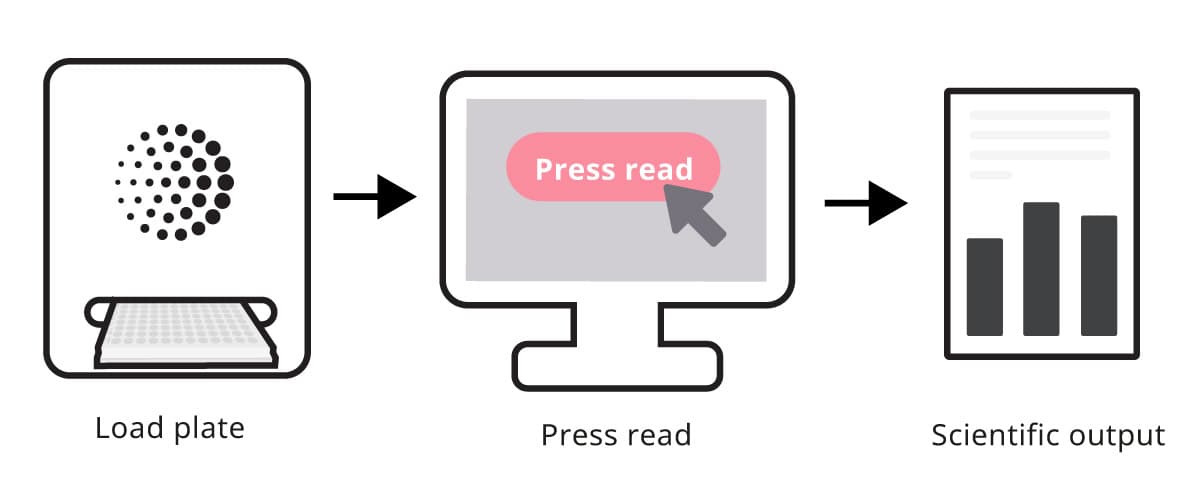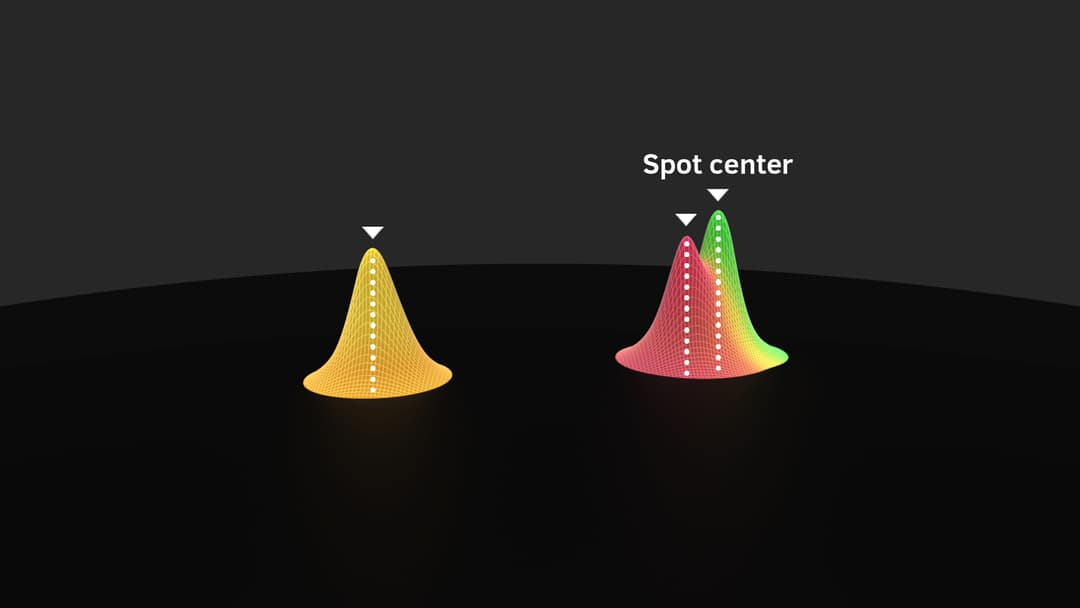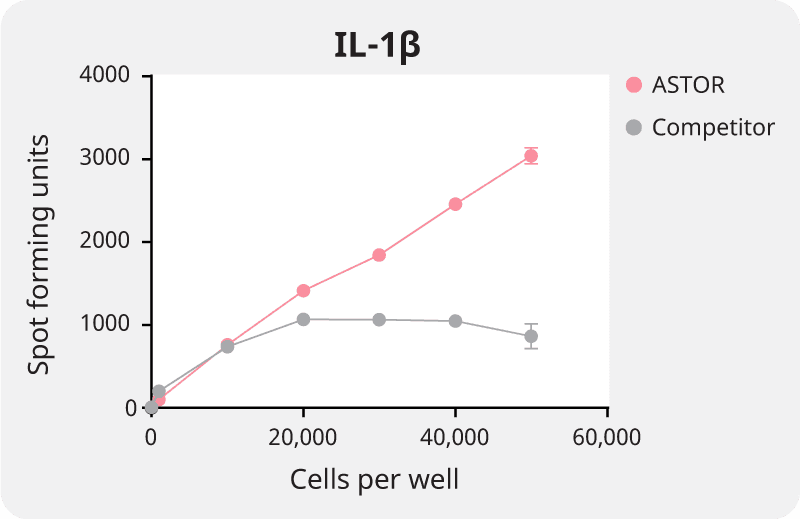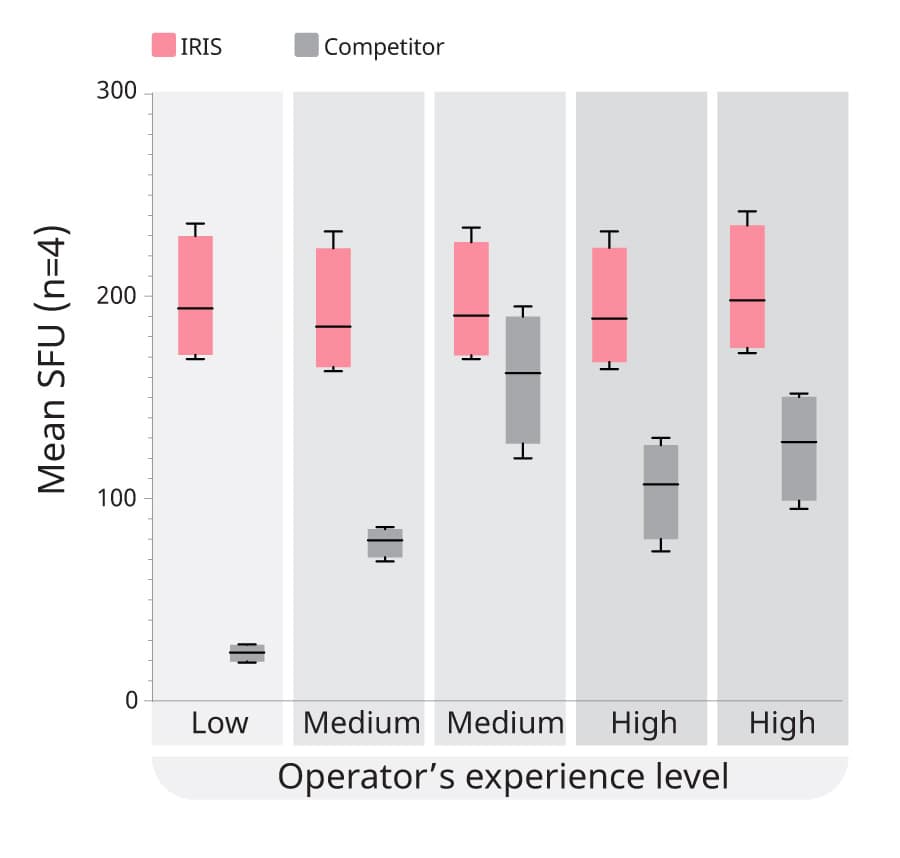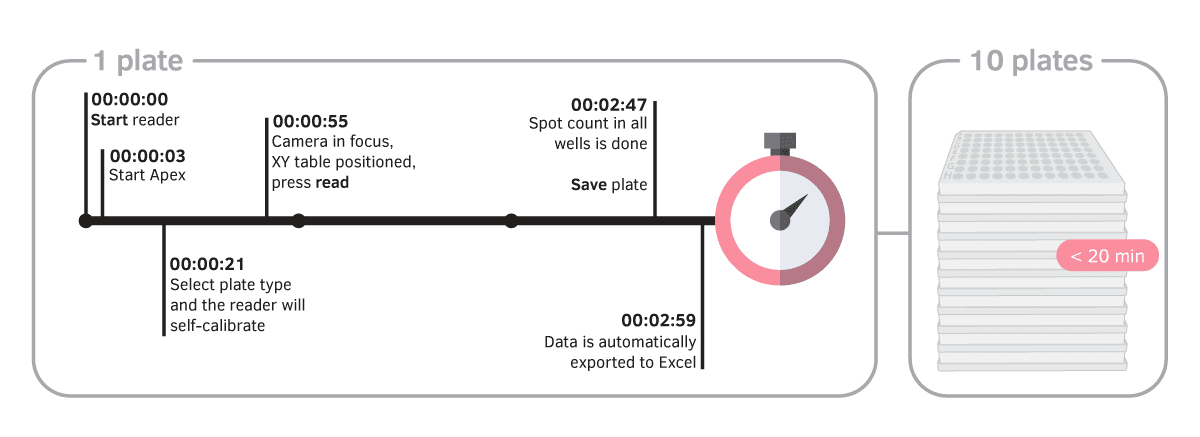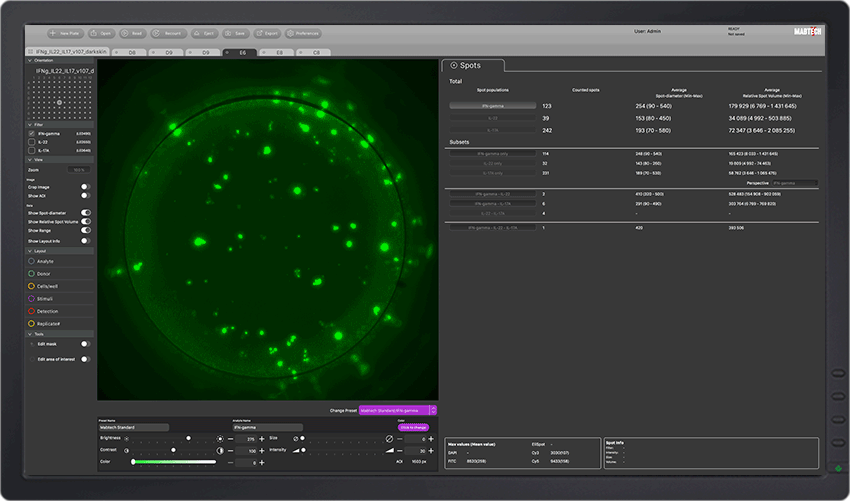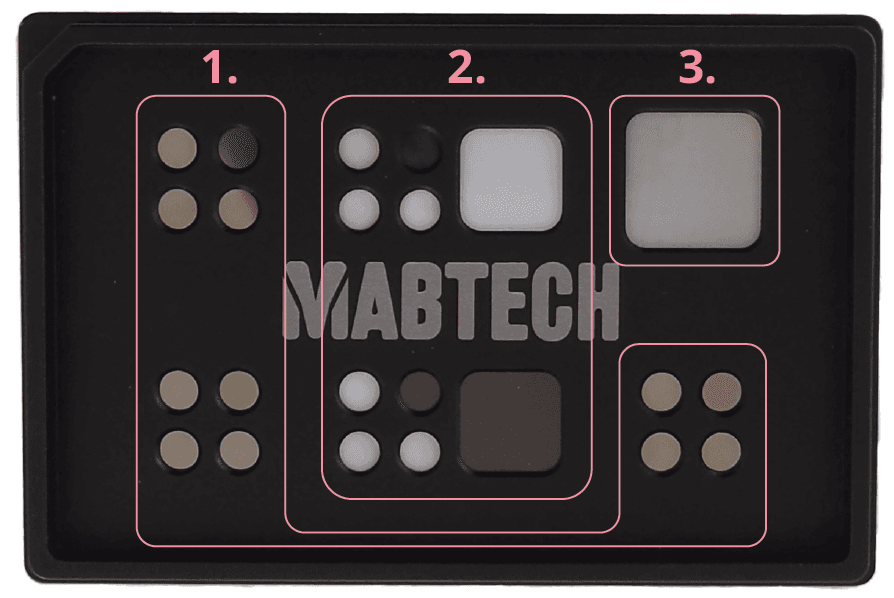Spot analysis reinvented!
To make plate reading and spot analysis effortless and reliable, we developed the Mabtech IRIS™ 2 and Mabtech ASTOR™ 2 from the ground up. Relying on our years of extensive knowledge in the ELISpot and FluoroSpot field, we knew first hand what the issues were with other readers, and launched our very own back in 2018.
Currently on our second generation, Mabtech IRIS 2 supports FluoroSpot, ELISpot, and FociSpot analysis, while Mabtech ASTOR 2 is our ELISpot-only reader.
Our readers offer a revolutionary approach to spot analysis. Simply select the assay, load the plate, and press read. Our patented RAWspot™ algorithm ensures highly accurate spot center detection and counting. The Mabtech Apex™ software provides a plug-and-play system that is incredibly user-friendly. With IRIS 2 and ASTOR 2, you can enjoy effortless and accurate spot analysis.
"Having used other readers, I struggled with reproducibility even with my own protocols. With ASTOR, I am confident in performing analysis and achieving consistent results, even when letting colleagues analyze plates."
- Shannon Tracey, Research Fellow
Signal processing – beyond image analysis
Precise spot center detection for accurate analysis
The RAWspot™ algorithm is a powerful spot detection system to enhance the accuracy of spot analysis. It identifies the center of each spot with utmost precision, which is crucial for determining the secretory activity of cells. This allows for effective detection of multi-analyte secreting cells in FluoroSpot assays, where several analytes (such as cytokines) are measured from the same cell.
The standout feature of the RAWspot™ algorithm is its ability to process raw, uncompressed image data from the camera sensor, avoiding issues like oversaturation that commonly occur with standard 8-bit image formats (JPEG, TIF). This enables it to accurately capture even high-density spots, ensuring reliable results even with thousands of spots per well. It also computes the Relative Spot Volume (RSV) for each spot, giving researchers an additional metric to quantify the amount of analyte secreted by each cell, adding depth to the analysis.
Secretory profile of every cell
Our RAWspot™ technology depicts the secretory profile of every cell to determine the exact spot center. This ensures reliable spot counts as well as accurate identification of multi-analyte secreting cells in FluoroSpot. RAWspot™ technology’s 3D model allows for a new type of data be generated in FluoroSpot and ELISpot: Relative Spot Volume (RSV). Now you can measure the relative amount of secreted analyte per cell!
Have a look at our publication database to find some interesting publications where RSV was used.
Detect every spot
Mabtech IRIS 2 and Mabtech ASTOR 2 identify distinct spots in a linear fashion without hitting a plateau. Powered by advanced signal processing, the RAWspot™ algorithm ensures objective results for immediate analysis, detecting every spot—big or small, faint or clear.
While other readers plateau under less crowded conditions, IRIS and ASTOR consistently deliver accurate counts where others fall short, accurately counting up to 3000 spots per well. So, when your compound triggers a strong immune response, you can rely on precise counting and measurement.
Minimize subjective analysis
Automated reader configurations and default analysis settings minimize subjective input, reducing operator bias. Spot analysis has never been easier and quicker!
In the image below, it is evident that on IRIS, operators of varying experience levels achieve consistent results, in contrast to competing readers. Given that both ELISpot and FluoroSpot assays are inherently subjective when it comes to analysis, introducing additional variability through reader settings (such as focus adjustments or excessive parameter configurations for spot counting) only exacerbates inconsistencies across users and experiments.
Quick data acquisition
An overlooked and time-consuming aspect of spot assays has been data analysis. With reliable data, a plug-and-play experience, and unprecedented export capabilities (Excel and GraphPad Prism), our readers reduce the time from data acquisition to final analysis, facilitating high-throughput and larger studies.
Read once, adjust later
After reading the plate, you are free to change count settings, the experimental layout, and the look of well images, all without affecting the original data. The entire signal from each spot is already recorded, so adjustments can be done post-reading and you’ll never have to re-read a plate.
Another great feature of our software is that it can be installed on your personal laptop, allowing you to perform analysis from the comfort of your office – no need to be in the lab!
Exact spot centers ensure reliable multiplexing.
Performance qualification done right
Our readers are reliable tools that can be trusted to deliver accurate results over an extended period of use. However, it’s essential to demonstrate that the readers maintain acceptable performance over time, especially when facing internal or external review for regulatory compliance. Mabtech’s Performance Qualification (PQ) plates provide a solution for verifying that our instruments fulfill quality specifications and to ensure reproducibility. The PQ plates allow users to conduct a series of quantitative and qualitative tests making it easy to identify any incorrect or inconsistent operation of the reader. By using PQ plates, our instruments can be confidently validated providing peace of mind knowing that experiments are accurate and reliable.
Different sections of a PQ-plate:
1. Tests focus and RAWspot™ algorithm in FluoroSpot mode
2. Tests light intensity of LEDs used in FluoroSpot
3. Tests focus, RAWspot™ algorithm, and light intensity in ELISpot mode
A new era of almost-too-easy
Ready for automation
Both readers are designed to make the analysis of larger projects as painless as possible. In addition to self-calibration, responsive software, and easy data handling, IRIS 2 and ASTOR 2 allow for robotic plate loading. Our readers can be part of an automated workflow with a robotic arm or be fully integrated into a larger automated setup.
Automated artifact removal
Our artifact removal algorithm can automatically detect and eliminate artifacts in ELISpot and FluoroSpot readouts. This feature can be applied during plate reading, or afterward to remove common artifacts recognized as spots, including hair fibers, broken membranes, dirt, and clumps, ensuring quicker data collection; no need to manually mask wells!
Regulatory compliance
The EU and the US (FDA) have established guidelines for the life sciences industry, known as Annex 11 and 21 CFR part 11, respectively. These guidelines outline the use of computerized systems in clinical investigations and specify that the quality of source data obtained through these systems must match that of traditional paper records.
Our software has been designed to comply with the following guidelines in § 11.10 Controls for closed system of 21 CFR:
- Validation – Part 11.10 (a)
- Copies – Part 11.10 (b)
- Record protection – Part 11.10 (c)
- Access limitation, operational system checks and authority checks – Part 11.10 (d, f, g)
- Audit trails – Part 11.10 (e)
- Device checks (h)
Discover the power of automation as a robotic arm flawlessly loads ELISpot plates into the Mabtech IRIS 2.
Automated artifact removal explained
Schedule a discovery call

